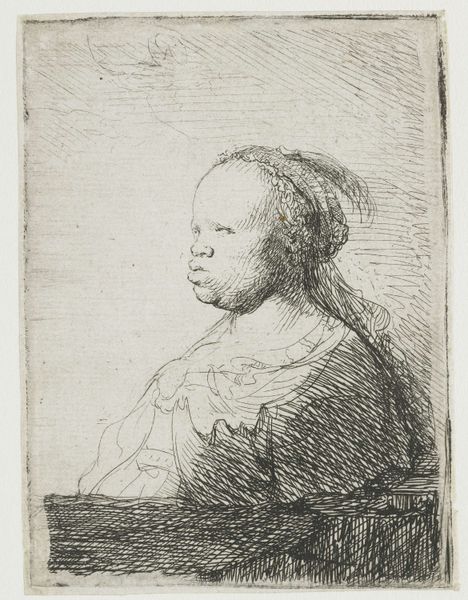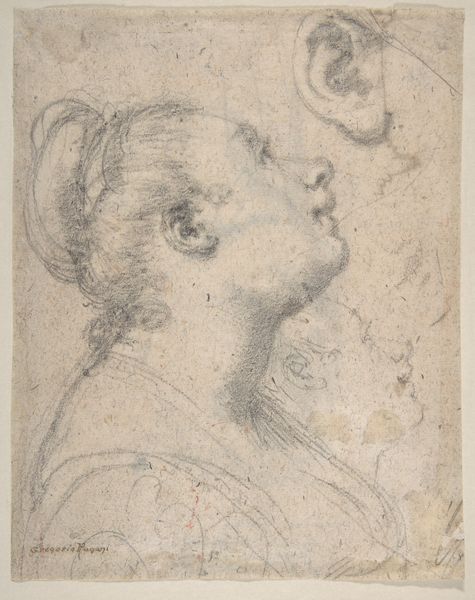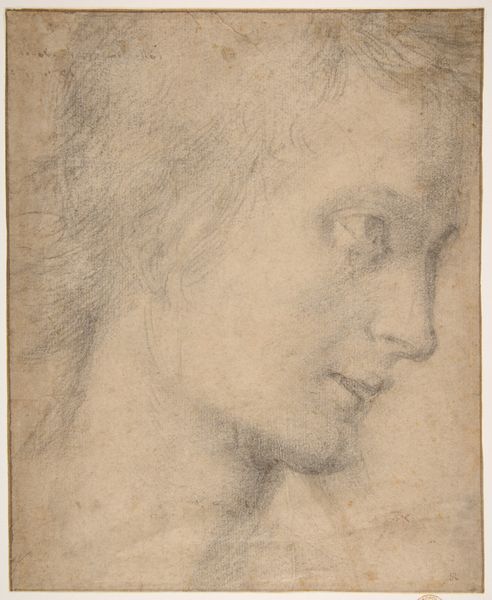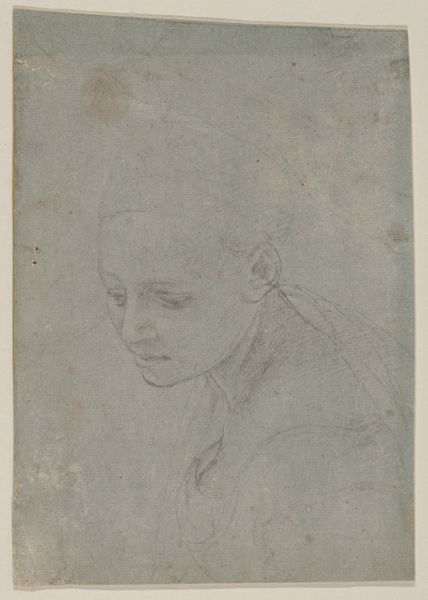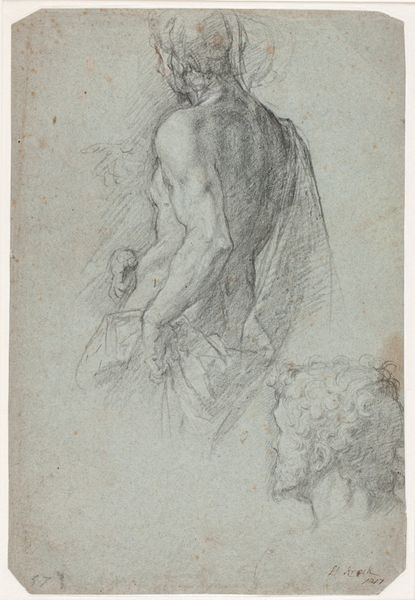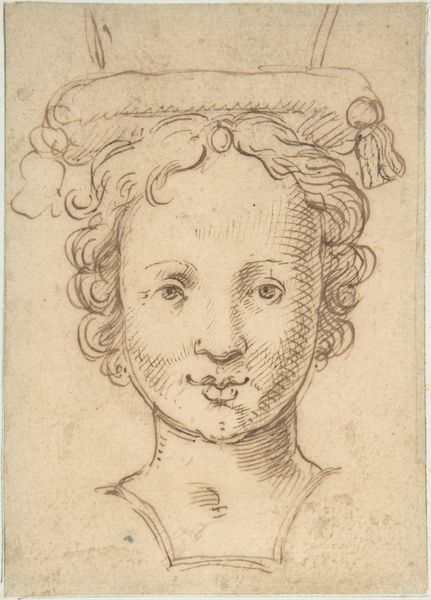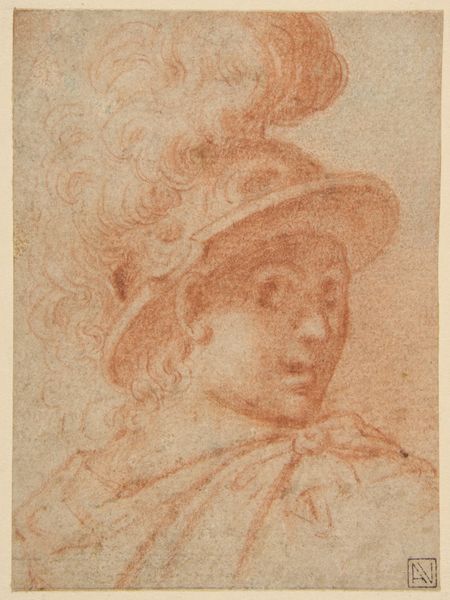
Severed head, said to be that of Maximilien-François-Marie-Isidore de Robespierre (1758-1794), guillotined July 28, 1794 (10 Thermidor, An II) 1794
0:00
0:00
drawing, print, pencil
#
portrait
#
drawing
#
head
# print
#
figuration
#
pencil drawing
#
romanticism
#
pencil
#
history-painting
#
academic-art
Dimensions: 6 7/16 x 4 7/16 in. (16.3 x 11.3 cm.)
Copyright: Public Domain
Baron Dominique Vivant Denon made this drawing of a severed head, thought to be Robespierre's, shortly after the French Revolution, using graphite on paper. The composition is stark, dominated by a disembodied head held aloft by a large hand. The artist's delicate lines capture the lifeless weight and the grim reality of revolutionary justice. The drawing's power lies in its formal contrasts. The head, rendered in meticulous detail, sharply contrasts with the crudely sketched hand. The vertical orientation of the dripping neck creates a sense of finality, a full stop to a life and an era. The lack of background focuses our attention, intensifying the image’s disturbing presence. This work destabilizes the traditional portrait. By presenting only the severed head, Denon confronts us with the brutal consequences of ideological extremism. It is a potent symbol of the revolution’s descent into terror and its challenge to established orders of power. The drawing’s formal qualities serve not just as aesthetic choices, but as profound statements about history, power, and the fragility of human existence.
Comments
No comments
Be the first to comment and join the conversation on the ultimate creative platform.


